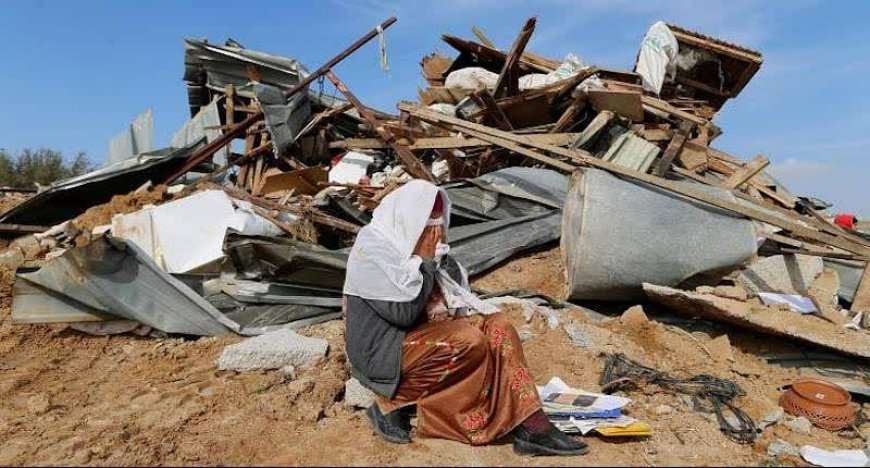Unmasking Israel's Demographic Strategy: The Occupied Palestinian Territories in Focus
Unmasking Israel's Demographic Strategy: The Occupied Palestinian Territories in Focus

Since its establishment in 1948, the Zionist regime [Israel] has pursued an insidious policy aimed at maintaining Jewish hegemony, with a focus on maximizing Jewish control over the occupied territories while minimizing the demographic presence of Palestinians. This article delves into the historical context and legal framework surrounding this ongoing crisis, shedding light on the demographic considerations and implications of Tel Aviv’s policies.
Demographic Considerations and Historical Context
In this context, it is worth noting that in 1940, Yusuf Weitz, the director of the Land Settlement Department of the Jewish National Fund, highlighted in an article the necessity of transferring Palestinian Arabs to neighboring countries. Likewise, Israel Zangwill, a prominent Zionist thinker in 1916, emphasized the inherent folly of allowing a nation to accommodate two distinct peoples when endeavoring to provide a homeland for a people without one.
Consequently, the laws and policies implemented by the Israeli regime were driven by "demographic considerations" right from the outset. The objective was to alter the demographic composition of the newly established nation in favor of Israeli Jews. Consequently, both the Palestinians residing within the borders of Israel and those residing within self-governing entities were viewed as a potential threat to the creation and maintenance of a Jewish majority. As a result, a decision was reached to expel, segregate, control, and dispossess the Palestinian population.
Legal Privileges and Discrimination
Jewish Israelis enjoy privileged legal status under the laws of the Zionist regime, regardless of their location within the territories under its control. The Jewish identity of the State is deeply ingrained in its official and national institutions. Palestinians residing in the occupied territories are often referred to as "Arab citizens of Israel," encompassing various predominantly Arabic-speaking groups. However, Circassians and Druze are often categorized separately from Muslim and Christian Arabs in official discourse.
Expanding Policies of Occupation
Since 1967, Zionist regime has extended its policies beyond the Green Line into the occupied West Bank and Gaza Strip, primarily benefiting Jewish settlers at the expense of Palestinians. The displacement of hundreds of thousands of Palestinians between 1948 and 1967, known as the "silent transfer," aimed to alter the demographic landscape in favor of Israeli Jews. The Jewish Nation-State law of 2018 further solidified the intention of preserving a Jewish majority and suppressing Palestinians.
Dispossession and Discriminatory Housing Practices
The Zionist regime has systematically occupied Palestinian homes and properties, limiting living space through discriminatory housing and construction planning. Despite Palestinians constituting around 70% of the population in 1948, Zionist authorities have authorized the creation of over 900 "Jewish neighborhoods" in the occupied territories, while only a handful of government-planned settlements and villages have been approved for Palestinians. In the Negev region, the Israeli authorities have consistently refused to grant legal recognition to 35 Palestinian Bedouin communities, resulting in the displacement of approximately 90,000 individuals.
Instead, a sinister policy has been implemented to consolidate these Bedouin communities into larger designated settlements, with the explicit aim of maximizing available land for Jewish residents, as clearly stated in government plans and official declarations. Israeli law strictly prohibits any form of construction within these villages, and essential services such as access to national electricity and water grids, as well as basic infrastructure like paved roads and sewage systems, are deliberately withheld from the majority of these homes. Additionally, it is noteworthy that Arab communities are systematically excluded from official maps, educational facilities remain scarce, and residents live under constant threat of their homes being demolished.
The Case of the Village of Sawe al-Atrash
In January 2022, the Israel Lands Authority and the Jewish National Fund started planting trees in the territories belonging to the Arab inhabitants of the village of Sawe al-Atrash, located in the Negev Desert. This action was taken with the intention of forcing the local Arab population of the area to relocate. The silent displacement of Palestinians through such measures illustrates the ongoing efforts by the Zionist regime to maintain Jewish population control and dominance.
The Changing Population Dynamics
Since annexing East Baitul-Muqadas [Jerusalem] in 1967 Six-Day War, the Zionist regime has sought to alter the demographic composition in favor of Jews. Policies such as occupying Palestinian homes in the Sheikh Jarrah neighborhood and denying economic and social rights to Palestinians in the eastern part of Baitul-Muqadas have been employed. Additionally, Jewish settlements in the West Bank have steadily expanded, in violation of international law and numerous United Nations resolutions.
The Gaza Strip: A Perpetual State of Siege
Despite the removal of Zionist settlers from the Gaza Strip in 2005, Israel has maintained effective control over the area through air, sea, and land blockades. The official policy of separating Gaza from the West Bank, coupled with the dominance of Hamas, has exacerbated the dire situation. The blockade has severely limited foreign investment, trade relations, and financial and goods exchange, leading to high unemployment rates and an overall humanitarian crisis.
Conclusion
The Palestinian conflict is deeply intertwined with complex dynamics of demographical control and land occupation. The Zionist regime’s pursuit of a Jewish majority has resulted in the expulsion, segregation, and dispossession of Palestinians. Discriminatory housing practices and the expansion of Zionist settlements continue to shape today’s demographic landscape in the occupied territories.
On the other hand, the Gaza Strip, the most densely populated region in the world, remains under severe siege, exacerbating an already catastrophic humanitarian situation. Understanding the Israeli demographic agenda is crucial for any meaningful resolution to the conflict and the establishment of a just and lasting peace.













































